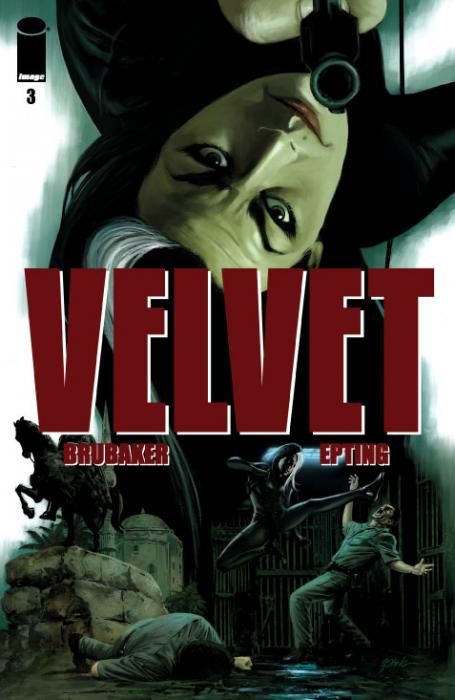"Velvet" #3 by Ed Brubaker and Steve Epting has the title character hot on the trail of the truth about X-14, after the first two issues, which introduced the circumstances that spurred her to reactivate herself as an intelligence agent.
Like any good spy story, the initial mystery has layers, and "Velvet" #3 peels back the first layer. Brubaker has Velvet traveling across Europe, and sets up a self-contained and efficient flashback that explains why she is breaking into a prison in Yugoslavia on the first page. The plot twist near the end of the issue is classic, but still manages to be a surprise due to the point of view and Brubaker's pacing. The deepening complexity of the plot is satisfying. "Velvet" colors within the lines of the spy genre, while still distinguishing itself by its main character.
In addition to a lot of action and significant plot movement in 22 pages, Brubaker and Epting also expand Velvet's characterization. Like "Fatale," "Velvet" is very focused on the movements and the effect of one woman. While Velvet has a mystery in her past, she's very different from Jo in her reliable narration and lack of victimhood. For a spy, Velvet's self-presentation to the reader is unusually casual and forthright. She treats the reader like a diary or a close confidante, and Brubaker creates an enjoyable voice for her in the textbox voiceovers, so much so that all the facts she serves up to the reader don't feel like an information dump but like half of a phone conversation. Epting's facial expressions for Velvet also enhance her characterization. The amused but exasperated, and despite herself, slightly flattered smile on Velvet's face as she tells her friend Burke to "stop looking at me like I'm still twenty-five" is perfect. She comes across as immediately likable, trustworthy and competent, with a practical turn of mind and a wry sense of humor. She's a tough and attractive older woman, confident and comfortable in her abilities and in her own skin. It's hard to resist her appeal, and the strength of her personality at this early juncture is a testament to Brubaker and Epting's skills.
Brubaker and Epting's story also distinguishes itself from classic spy fodder in its fine touches of humor, such as Velvet's rationale for choosing her seduction target. Epting's facial expressions are also strong for Velvet's friend Burke, who provides the other funny moments in "Velvet" #3 with his sheepish admission of "I said it was a shit idea" and his embarrassed "An' I meant no offense." Breitweiser's shadowy, muted palette don't hinder these lighter moments, but maintain an overall atmosphere of danger and secrecy.
Epting's layouts feel liquid in how smoothly they guide the reader's eye across pages, shadowing Velvet's movements and thoughts. His panel borders are particularly well-thought out. The panel proportions control pacing, and the occasional disappearing borders and unusual panel shapes all work to the benefit of the camera angles. On one page, the lower border of a panel follows the angle of Burke's gun arm for dramatic effect. The party scene features a delightful use of circular sub-borders to follow Velvet's eyes as they pick out persons of interest. This trick has been used before, but Epting's execution is particularly well-timed in its directional and comic effects.
Brubaker and Epting advance plot, world-building and characterization smoothly and efficiently in "Velvet" #3, solidifying the title as one of the strongest new ongoing series to come out of 2013.

